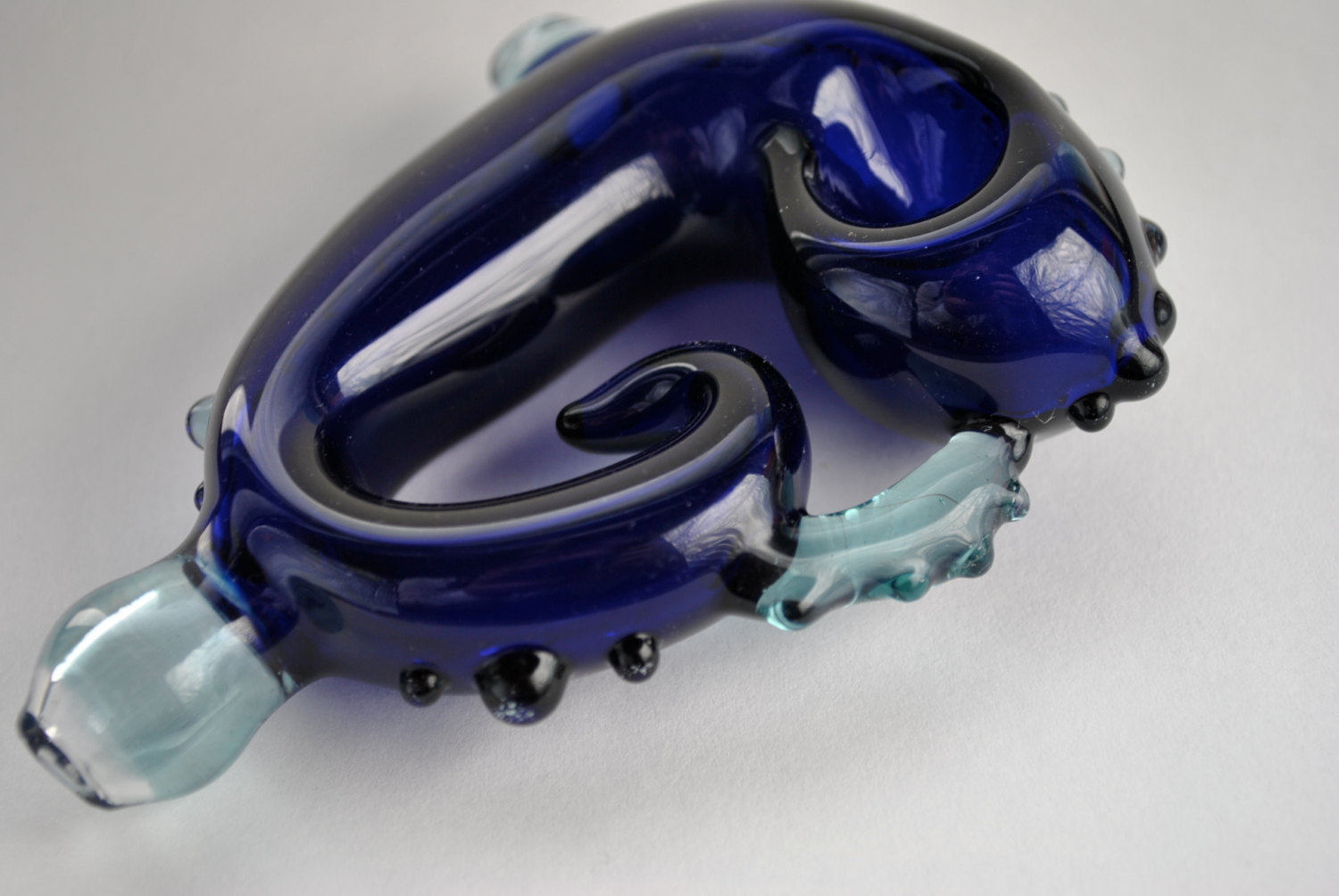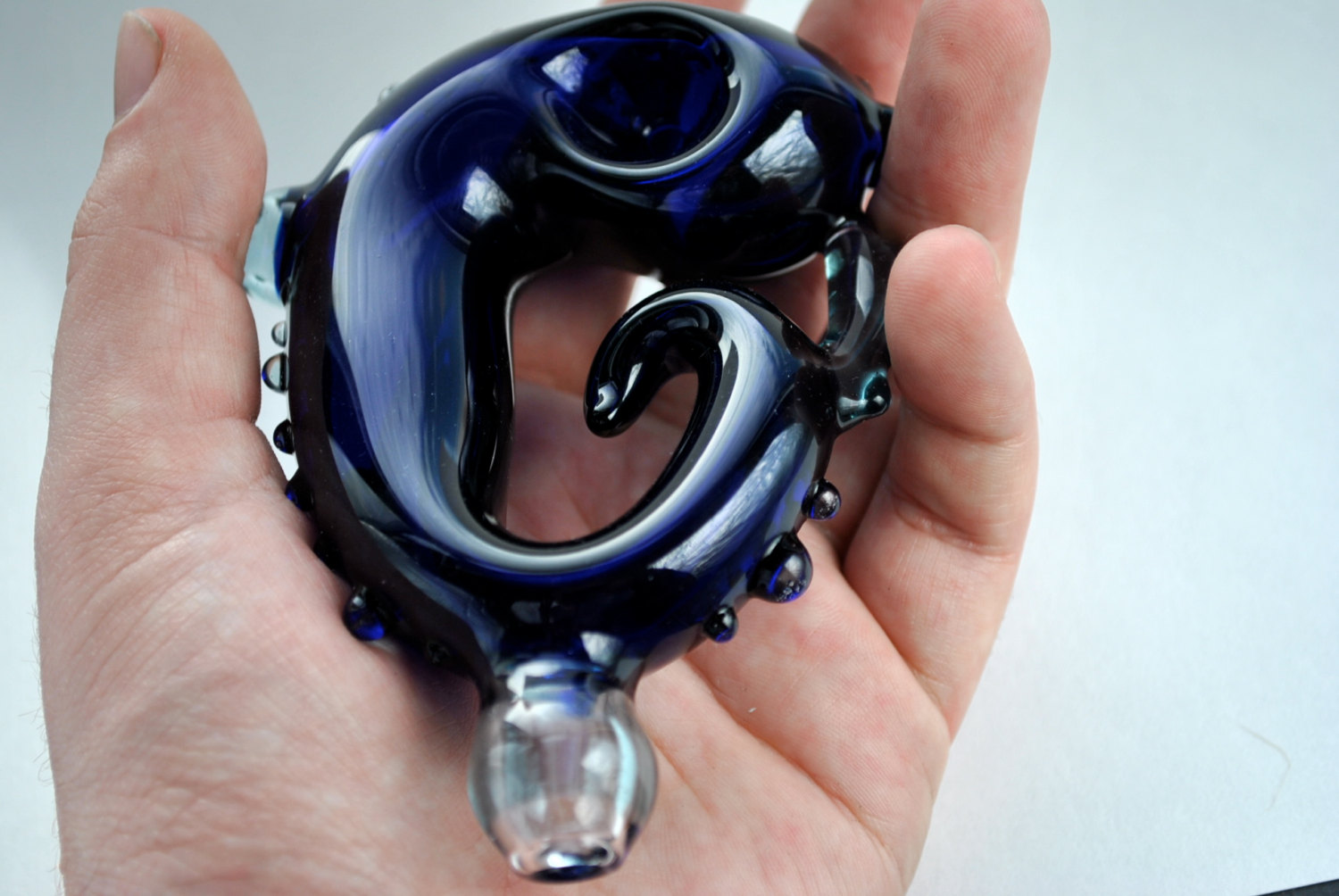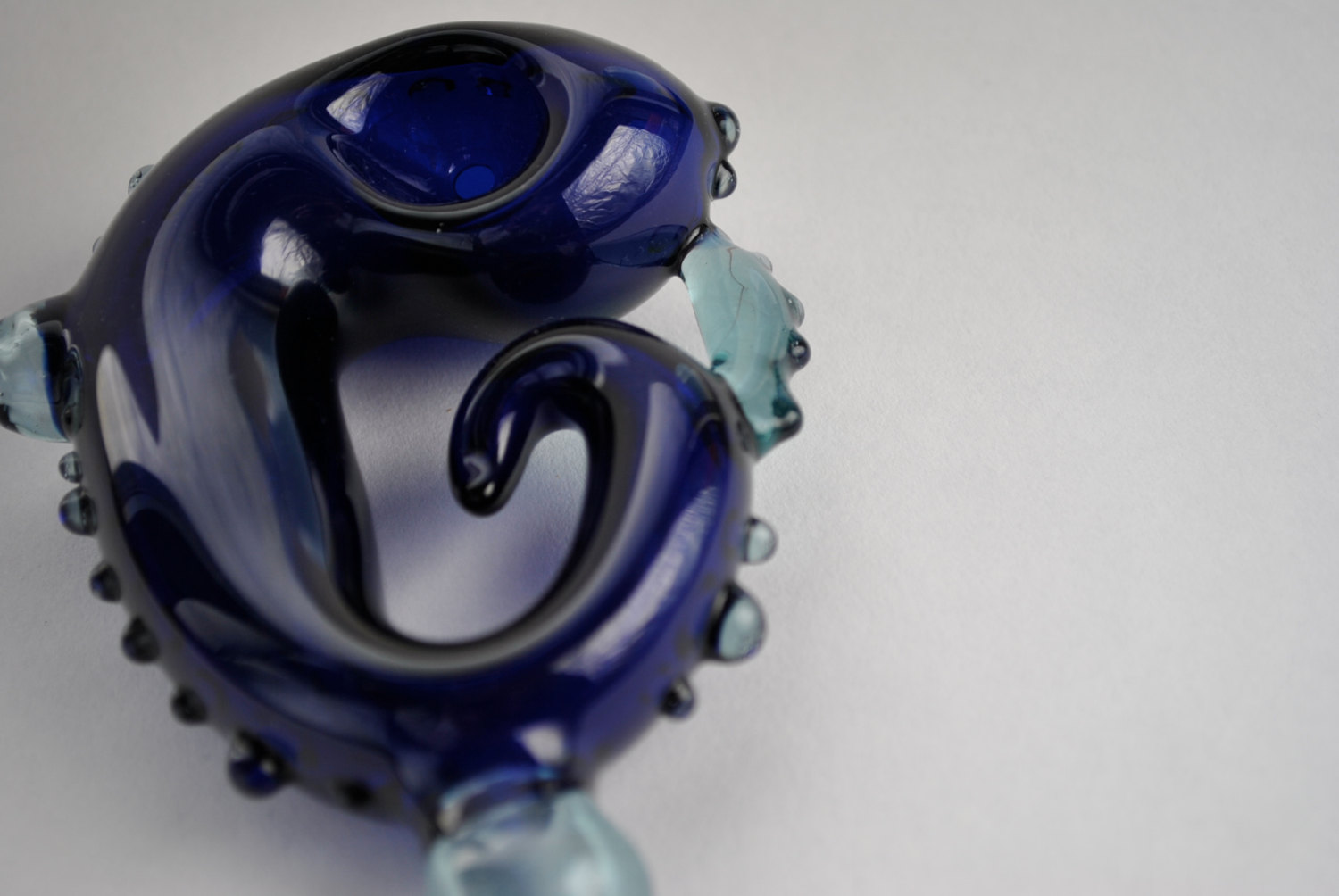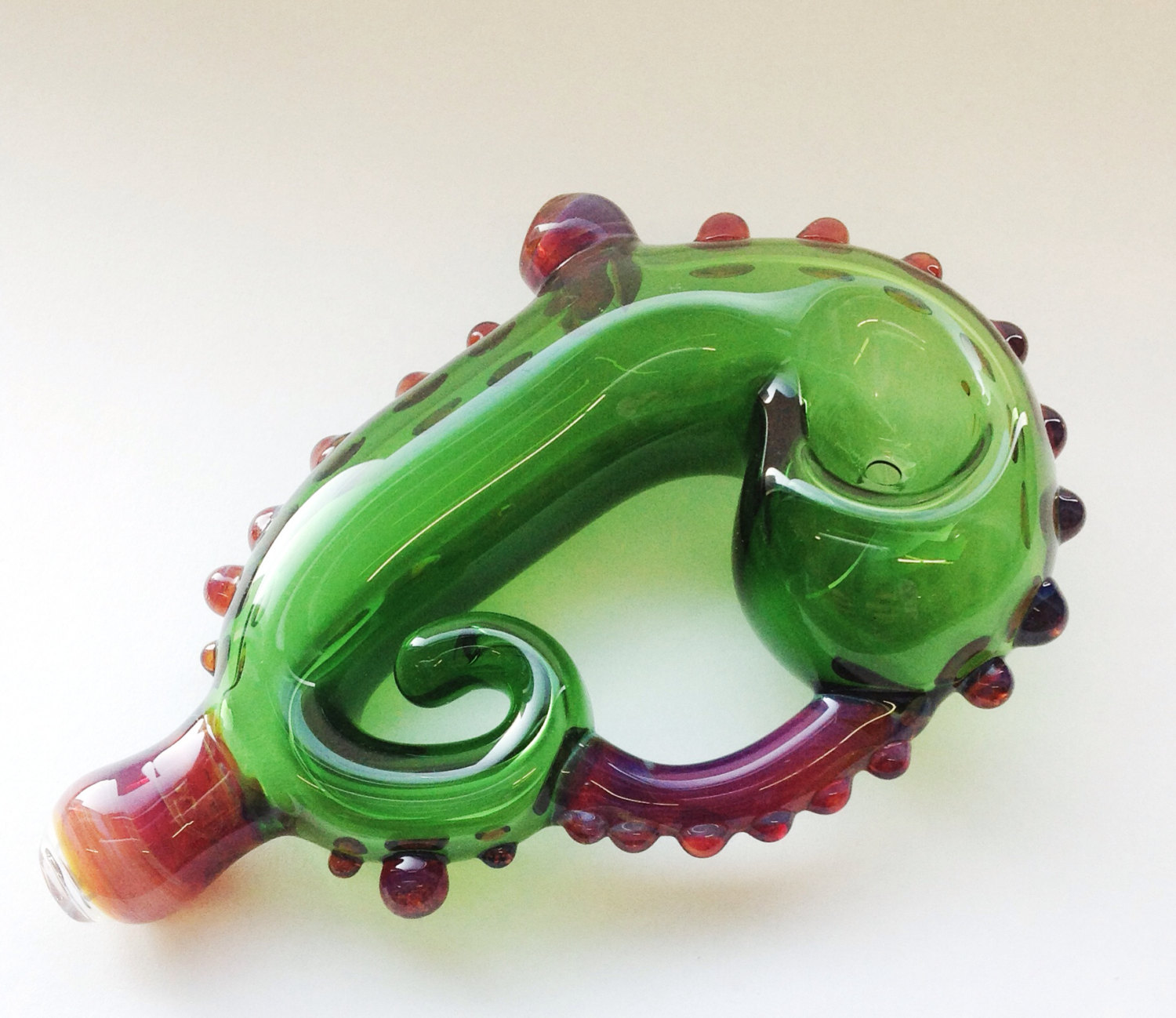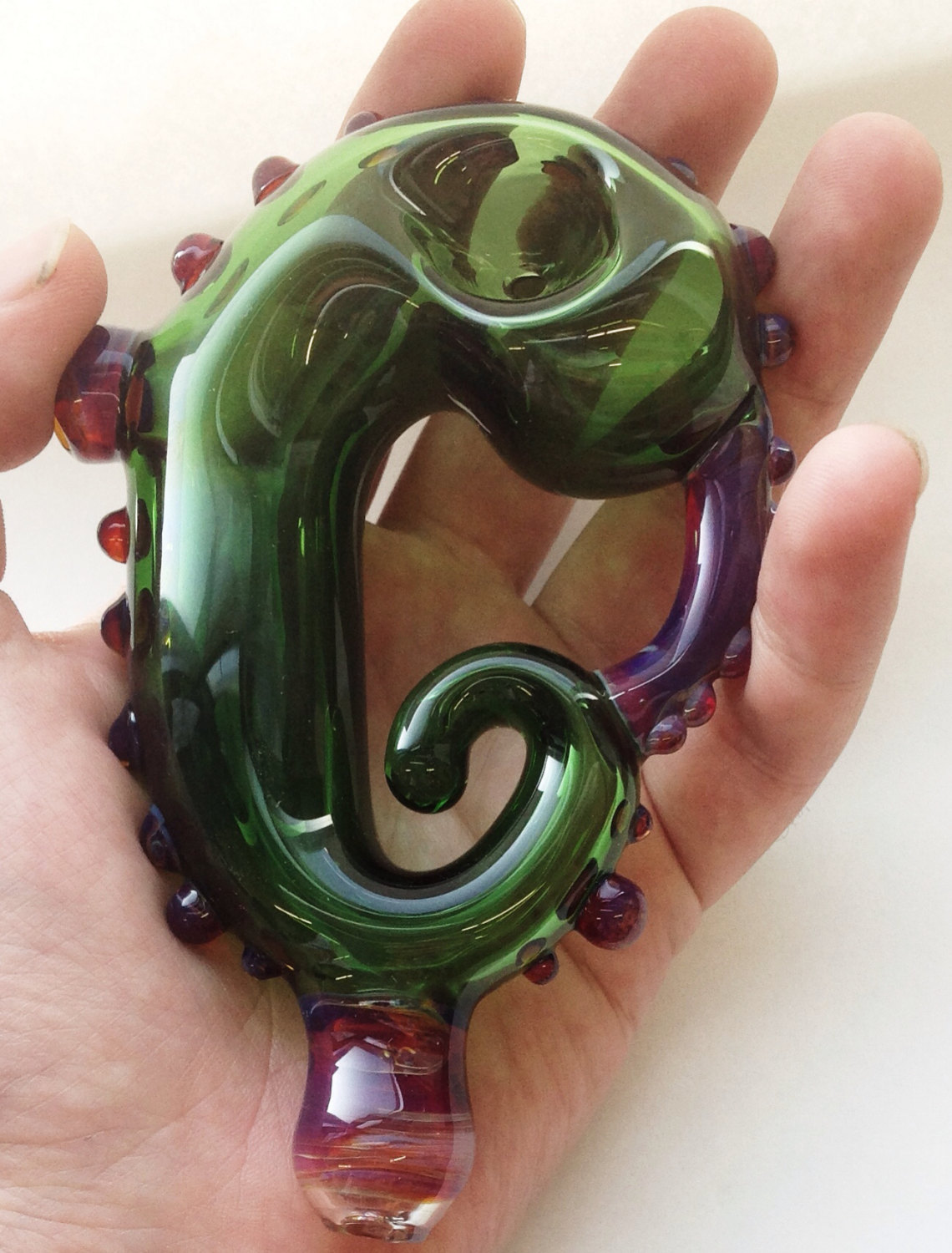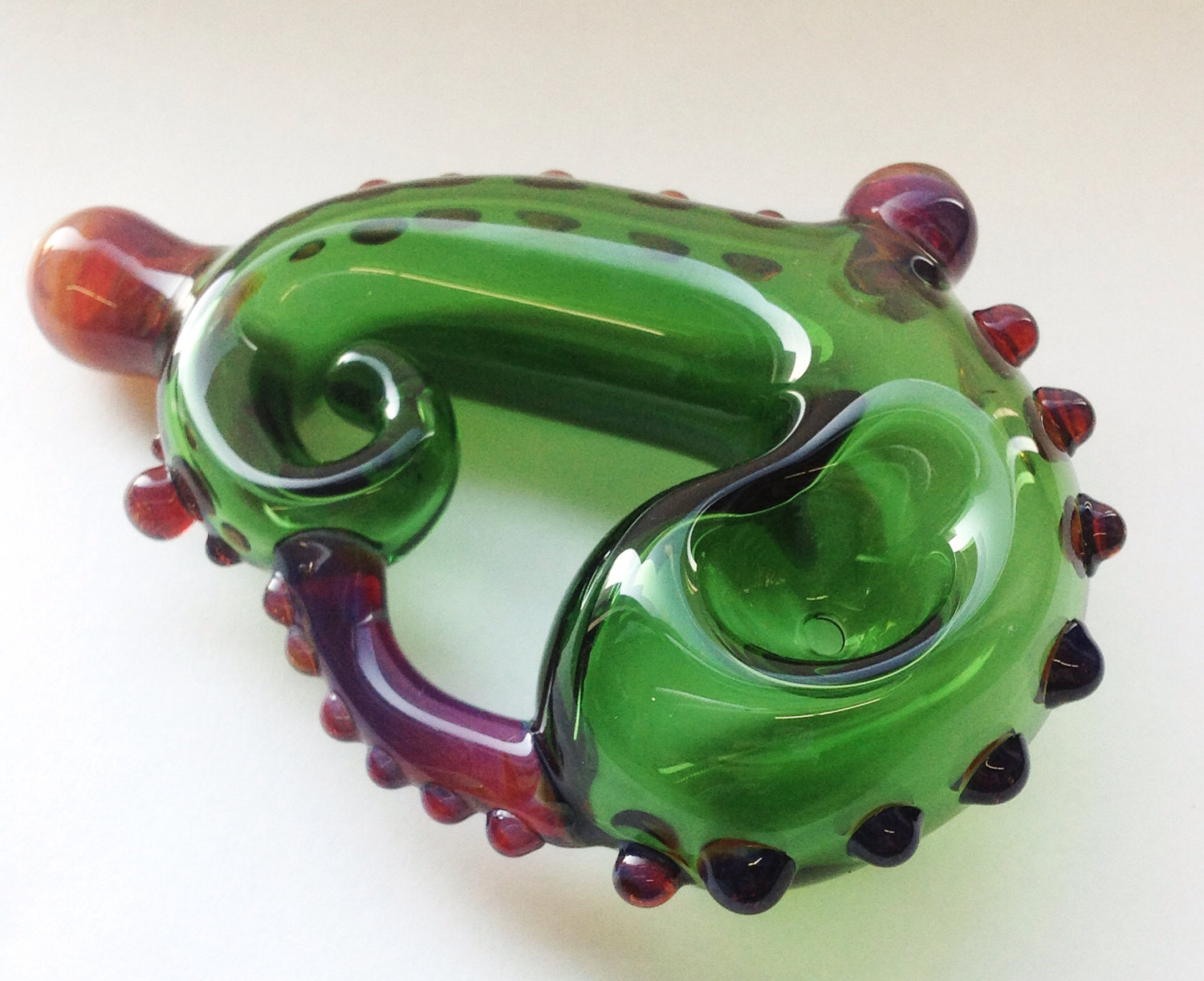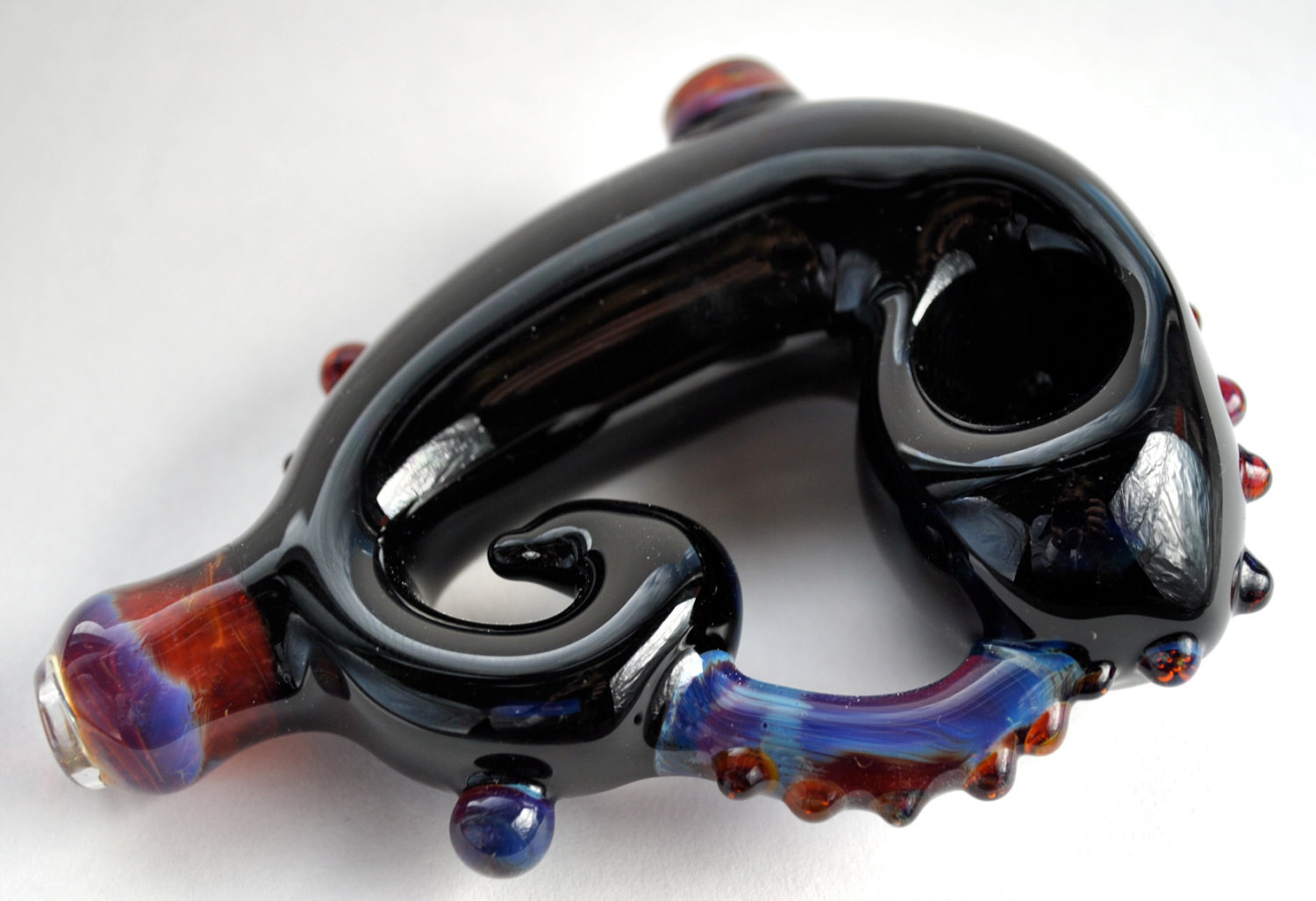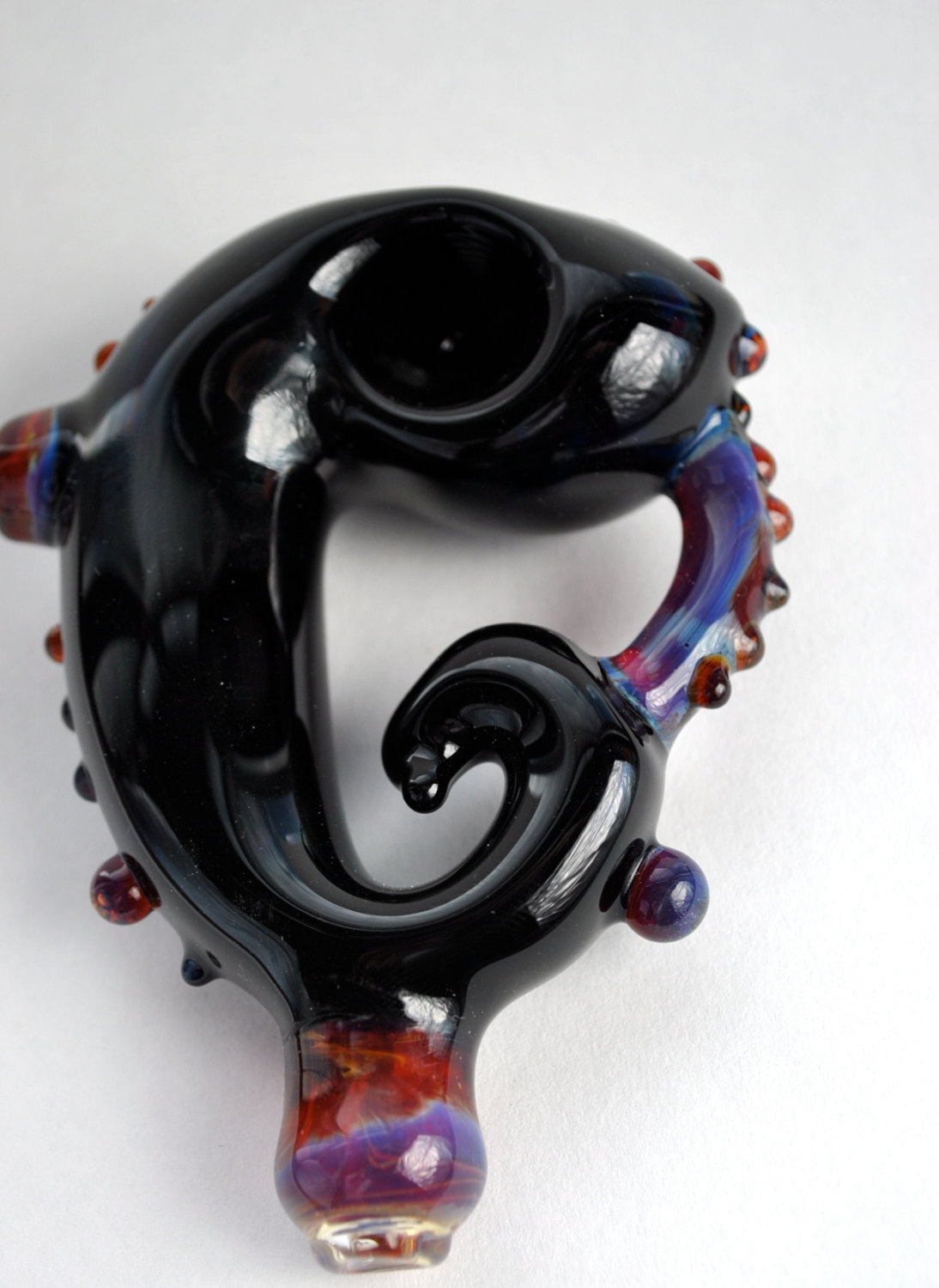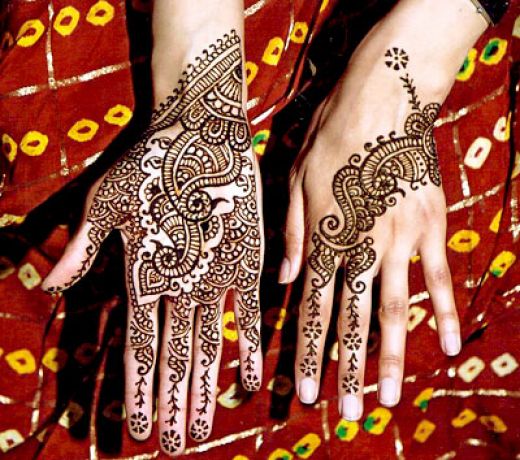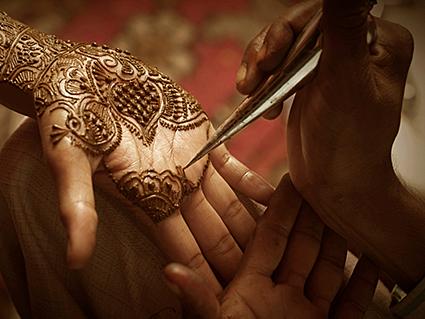This week we take a look at culturally inspired glass artwork, specifically this particular artist’s Henna Inspired Glass Pipe.
Henna Inspired Glass Pipe
This week’s piece comes from evManglass in Brooklyn, NY. These pieces have a particularly interesting story from the artist about a trip to India and how that inspired the work.
In the Artist’s Own Words
When I was in college I spent a semester traveling around India by trains and autorickshaws. I fell in love with the amazing colors and designs. This piece is part of a series that was inspired by the designs layered upon Saris and drawn out in Henna throughout the country.
For those folks that are not familiar with Henna, I put a couple of images in the gallery to show you some of the intricacies of this temporary tattooing ink. This beautiful art form has been around for a very long time. Henna ink actually stains the top layers of skin (brown, orange or coffee color) and the temporary tattoos can last for up to 2 weeks if well cared for. If you do happen to journey down the path of exploring henna tattoos, a note to the wise: stick with the pure henna ink, not the “black henna” ink, which isn’t really henna and has been known to cause permanent chemical burns for some people who are allergic. Black henna is most likely para-phenylenediamine, also known as PPD, a synthetic coal tar dye. I’m not going to put any images up here of the resulting chemical burns, but if you have to know, you can see more here.
Wikipedia on Henna
Henna (Lawsonia inermis, also known as hina, the henna tree, the mignonette tree, and the Egyptian privet) is a flowering plant and the sole species of the Lawsonia genus. The English name “henna” comes from the Arabic or, colloquially, loosely pronounced as /hinna/. The name henna also refers to the dye prepared from the plant and the art of temporary tattooing based on those dyes. Henna has been used since antiquity to dye skin, hair, and fingernails, as well as fabrics including silk, wool, and leather. The name is used in other skin and hair dyes, such as black henna and neutral henna, neither of which are derived from the henna plant. Historically, henna was used for cosmetic purposes in the Roman Empire, Convivencia-period Iberia and Ancient Egypt, as well as other parts of North Africa, the Horn of Africa, the Arabian Peninsula, the Near East and South Asia. It was also popular among women in 19th-century Europe. Today, bridal henna nights remain an important tradition in many of these areas. – Wikipedia
Check out other posts from Weedist’s Piece of the Week series









